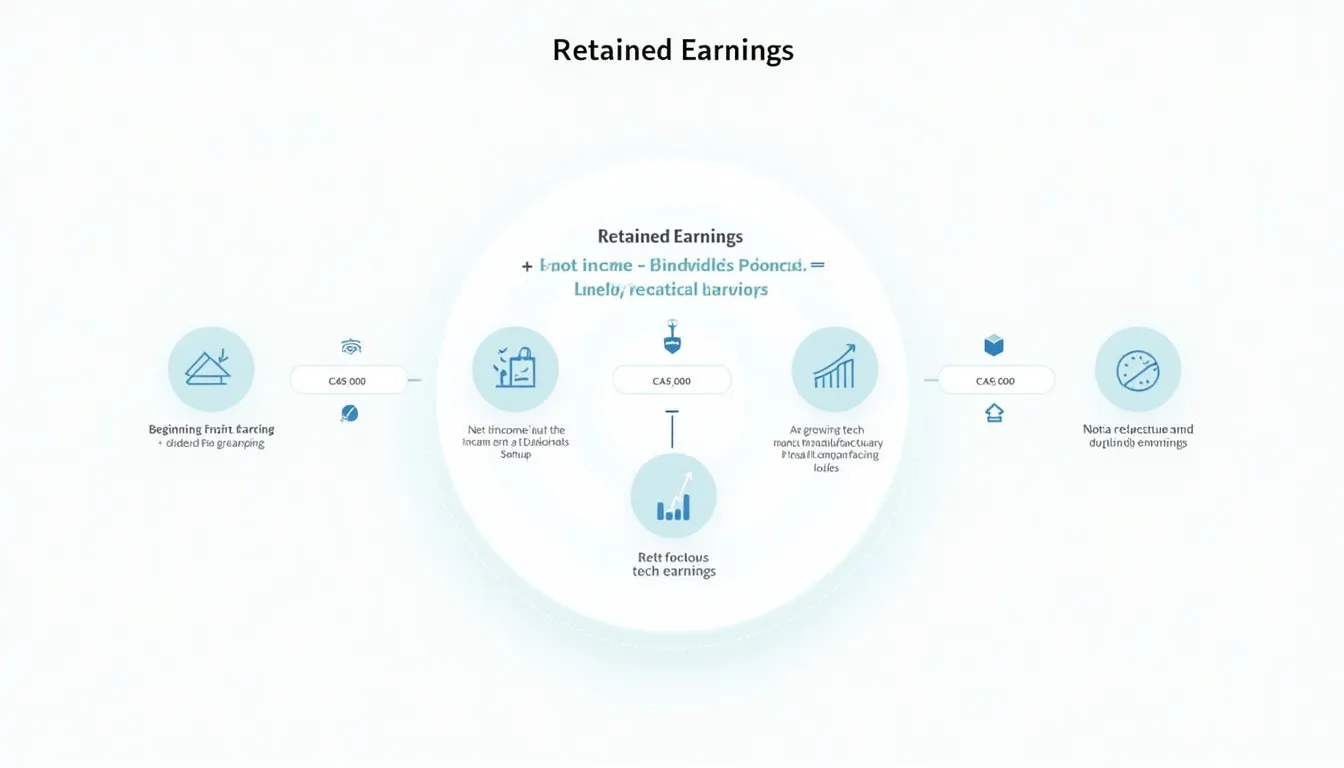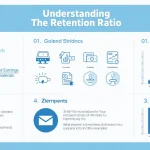Retained Earnings Calculator
Is this tool helpful?
How to use the tool
- Beginning Retained Earnings – type the opening balance. Examples: 80 000 or 155 500.
- Net Income (or Loss) – enter period profit. Examples: 30 000 or −15 000.
- Dividends Paid – add total shareholder payouts. Examples: 7 000 or 0.
- Adjustments – optional prior-period corrections. Examples: 1 000 or −2 000.
- Press “Calculate” to receive an on-screen retained earnings statement.
Formula used
The calculator applies:
$$\text{Ending RE}= \text{Beginning RE} + \text{Net Income} – \text{Dividends} \pm \text{Adjustments}$$
Worked examples
Example A – profitable period
- Beginning RE = 80 000
- Net Income = 30 000
- Dividends = 7 000
- Adjustments = 1 000
$$80\,000 + 30\,000 – 7\,000 + 1\,000 = 104\,000$$
Example B – loss with extra write-off
- Beginning RE = 120 000
- Net Income = -15 000
- Dividends = 0
- Adjustments = -2 000
$$120\,000 – 15\,000 – 0 – 2\,000 = 103\,000$$
Quick-Facts
- GAAP uses the same formula under ASC 505 – 10 (FASB, 2022).
- S&P 500 payout ratio averaged 35 % in 2023, leaving 65 % as retained earnings (Statista, 2024).
- Private U.S. firms keep 70 % of profits to finance growth (KPMG Private Enterprise Survey, 2023).
- Negative retained earnings appear as “accumulated deficit” on the balance sheet (Investopedia, Retained Earnings).
FAQ
What are retained earnings?
Retained earnings are cumulative profits a company has kept instead of distributing as dividends; they sit in shareholders’ equity on the balance sheet (AccountingCoach, “Retained Earnings”).
How does the calculator work?
You input four numbers; it applies the equation $$\text{Ending RE}= \text{Beginning RE}+ \text{Net Income}-\text{Dividends}\pm\text{Adjustments}$$ and instantly displays the updated balance.
Why subtract dividends?
Cash paid to shareholders exits the business, reducing equity; GAAP requires this deduction when computing ending retained earnings (ASC 505, FASB).
Which adjustments belong in the field?
Include prior-period error corrections and changes in accounting policy per IAS 8 or ASC 250 (IFRS Foundation, 2023).
How often should you update retained earnings?
Most firms recalculate after each monthly closing; public companies must update quarterly for 10-Q filings (SEC Form 10-Q Instructions).
What does a negative balance signal?
An accumulated deficit shows the firm has paid more in dividends or incurred net losses that exceed past profits, potentially limiting loan covenants (Moody’s Credit Handbook, 2023).
Are retained earnings taxed?
U.S. C-corporations pay corporate tax on earnings before they enter retained earnings; shareholders face a second tax only when dividends are paid (IRS Pub 542).
How can you improve retained earnings?
Increase sales margins, cut unnecessary costs, reduce dividend payouts, or reinvest in high-return projects (Harvard Business Review, “Capital Allocation”).
Important Disclaimer
The calculations, results, and content provided by our tools are not guaranteed to be accurate, complete, or reliable. Users are responsible for verifying and interpreting the results. Our content and tools may contain errors, biases, or inconsistencies. Do not enter personal data, sensitive information, or personally identifiable information in our web forms or tools. Such data entry violates our terms of service and may result in unauthorized disclosure to third parties. We reserve the right to save inputs and outputs from our tools for the purposes of error debugging, bias identification, and performance improvement. External companies providing AI models used in our tools may also save and process data in accordance with their own policies. By using our tools, you consent to this data collection and processing. We reserve the right to limit the usage of our tools based on current usability factors.







